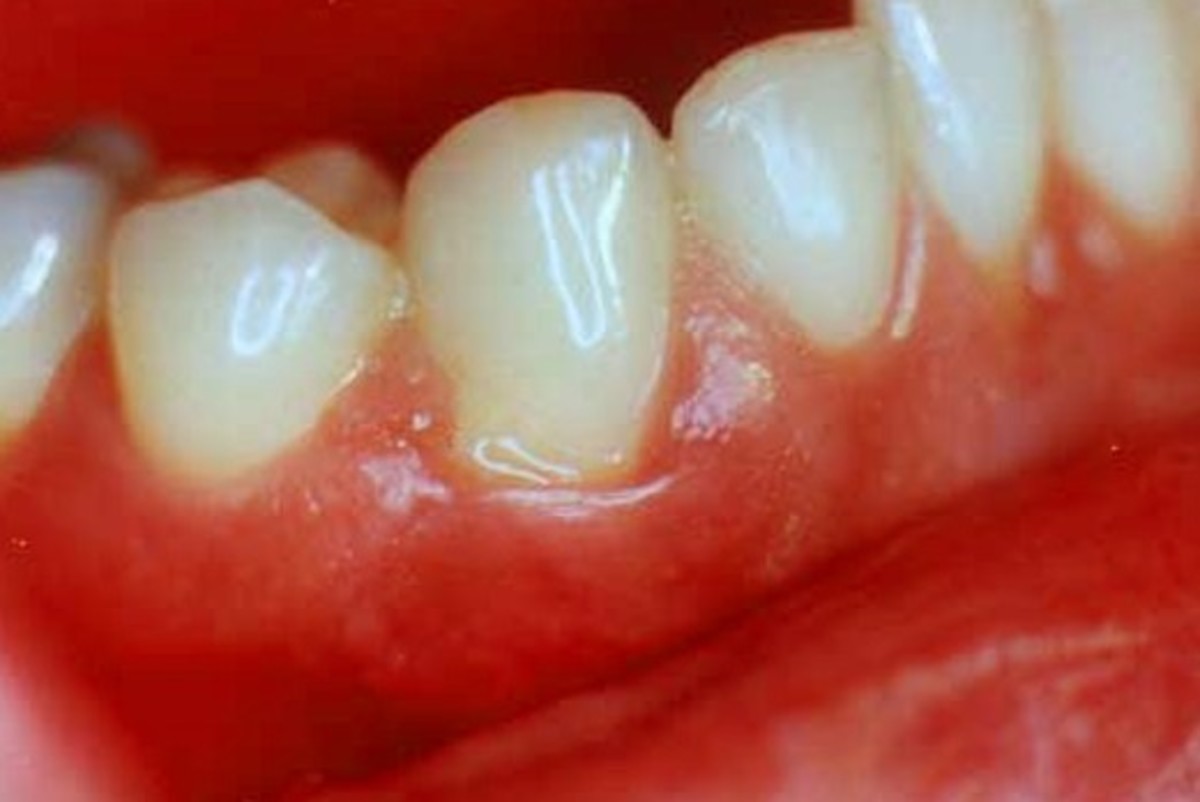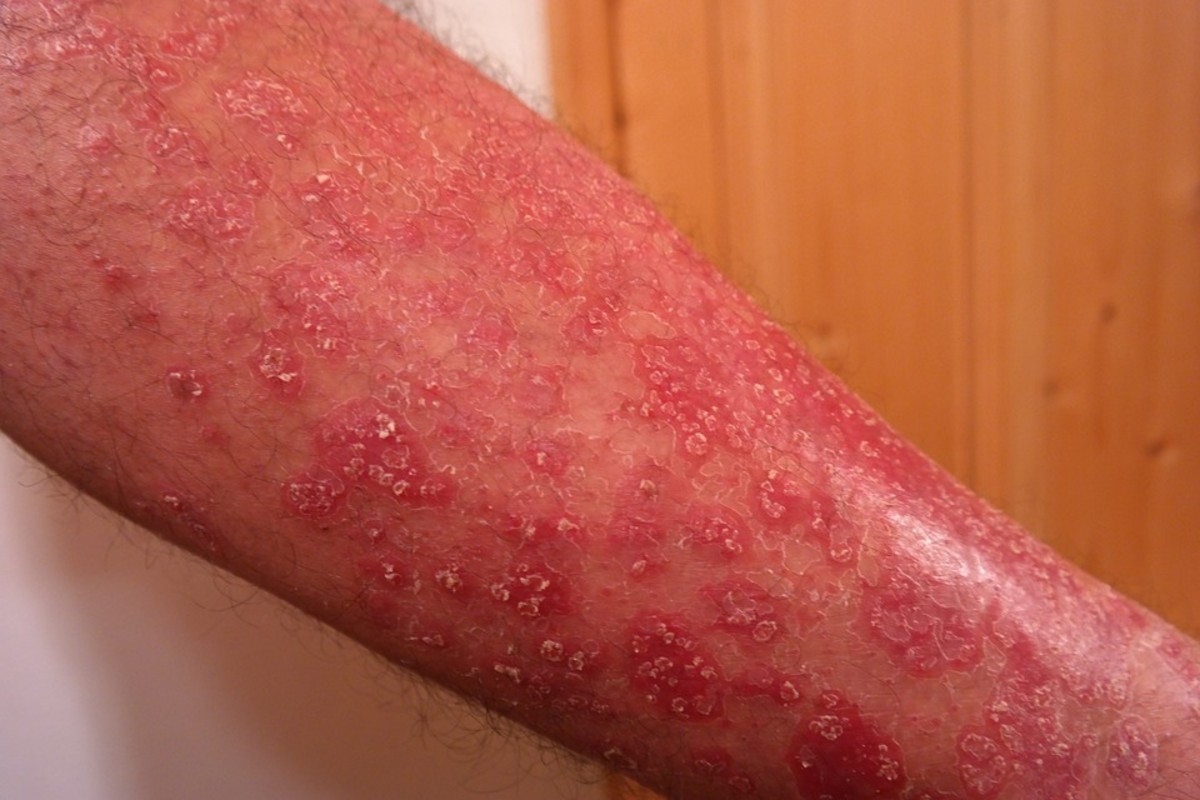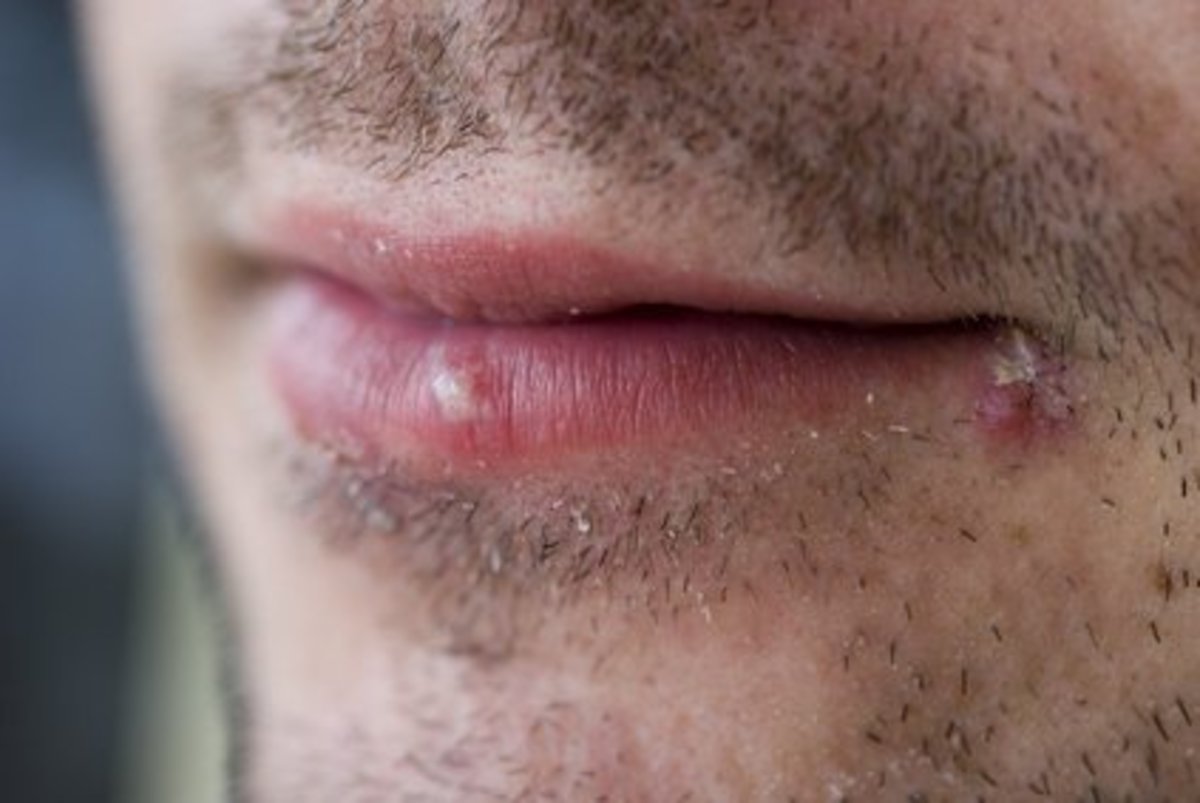Over 39 Possible Causes of Fever in a Toddler: how to Counter them
Vitamin C is a chelator that can bind with and remove dengue virus
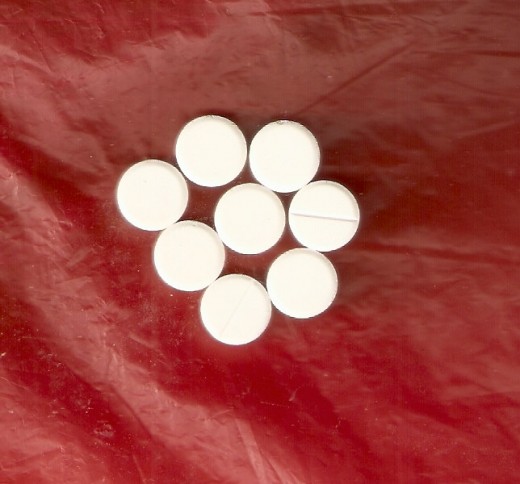
Aedes eigypti, one of four mosquito species transmitting dengue virus. Notice the white spots
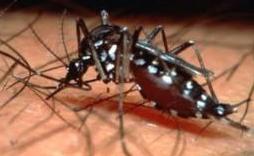
A fever is a welcome warning of infection
Fever is a symptom. It is not a disease. The usual cause of fever is infection. Now, there are several causes of infection in a toddler. Fever in itself is not bad or not to be feared. In a way it should be welcomed because it is a warning.
Why is fever a warning?
Macrophages, components of the immune system, release interleukin-1 that triggers the body to raise its temperature. This body heat is a way of the body to drive away the microbe, or slow it down, or kill it. If it had its way, a microbe doubles its population in every 20 to 25 minutes. Some microbes die at 40C temperature of the body; others may be slowed down at about 38C..
It is alright to be concerned about the fever. However, once it occurs, the proper attitude is to look for its cause which is usually an infection owing to a microbe. It is not advisable to suppress the fever right away by applying ice bag or cold compress. When you do, you are actually countering the natural method how the body fights the microbe thus defends itself. The fever may be allowed to run to a certain temperature, say 38C. But don't allow a very high fever that usually occurs with typhoid fever or tonsillitis. High fever results in convulsions.
I think the automatic reaction of suppressing the fever comes from the lack of understanding of how the body defends itself. I suspect some doctors do not explain the mechanism of fever, or they are not aware of it.
How about the chill that may come before or accompanies a high fever? No worry about the chill either. Sometimes the body is delayed in reacting to the signal from the brain that the virus must be given the heat treatment. The delay between signal and reaction causes you to chill (Bruning, N. Natural Medicine for Colds and Flu.1998). I did not learn about this chilling from a physician and I have had chills in all my life; and those of my wife, children, relatives and friends. Thanks to Bruning who, among several authors I have read, is the only one who explains it in a book.
Possible causes of fever in a toddler:
1. Hepatitis A. This is caused by hepatitis A virus. It causes inflammation of the liver, cirrhosis (scarring of liver), and liver cancer. The virus can be transmitted by food and water. It is concentrated in shellfish like oysters, clams, crabs, lobster, and mussels. A person infected by hepatitis A can clear this virus from his body once he gets well. There is a two-shot vaccine against it.
Children at least 2 years old must be given the first shot. The second one should be given 6 to 12 months after.
2. Hepatitis B. It is caused by hepatitis B virus. It is transmitted by blood. The newborn of a mother infected with hepa B virus will be infected because of contact with her blood during giving birth. Symptoms are fatigue, jaundice, nausea, vomiting, headache. Hepa B also causes inflammation of the liver, cirrhosis and liver cancer. There is a vaccine against it. However, a person infected by hepa B and who gets well does not completely remove the hepa B virus from his/her body.It supports hepatitis D in that hepa D virus cannot exist without hepa B virus. That is why to treat hepa B is to prevent hepa D. I have three other Hubs on hepa B. There is a vaccine against it that cannot completely eliminate the virus (more of this below).
The first dose must be given between birth and two months after; the second dose should be given one to two months after the first; the third must be given between 6 months and 18 months of age.
3. Hepatitis C. It is caused by hepa C virus. It is transmitted by blood. It has symptoms like that of hepa B virus. It causes liver inflammation, cirrhosis, and liver cancer. It can also affect the kidneys. Like hepa B, a person who is infected will not completely remove hepa C virus from his body when s/he gets well.
The Federal Drug Administration of USA and Health Protection Bureau of Canada have approved two forms of therapy against hepa C. One is the alpha interferons. The other is Rebetron. The best treatment so far is a combination of interferon plus ribavirin that leads to about 60% outcome
"...No vaccine is available for hepatitis C at this time...." (Heathcote, MD et al. Living with Hepatitis C. Revised edition. 2003:35).
4. Hepatitis D. It causes fatigue, jaundice, among others. It also leads to cirrhosis and cancer in the long run. it can only exist with hepa B virus. That is why to treat hepa B is to prevent hepa D. However, the hepa B vaccine cannot completely eliminated hepa B virus (more of this below).
5. Hepatitis E. It is spread by feces. There is no vaccine against hepa E virus (Healthcote, J. MD et al. Living with Hepatitis C. 2003:9).
6. Hepatitis G and TTV. These are new discoveries and not yet fully characterized (Same source as above). They cause fatigue, jaundice, among others. They also lead to cirrhosis and cancer in the long run.
More on hepatitis. Up until March 2012, the medical world knew that the body cannot clear hepatitis B and C. Fortunately, Dr. Arturo V. Estuita, MD, a Filipino internist and chelationist, discovered that hepatitis B virus is vulnerable to infusion chelation therapy. A patient with a count of 9 million virus in his body when he started chelation therapy had an outcome of about 425,000 virus after 10 sessions of the therapy. This first case was applying for a job in a commercial ocean-going ship. Sometime after his infusion chelation therapy he again went for a viral test at the clinic accredited by the shipping company. This time he was found to be clear of hepatitis B virus. This clinical discovery of Dr. Estuita is a breakthrough in medicine.
Yesterday, July 6,20012, an elderly woman called me on the phone asking for the address of the clinic of Dr. Estuita, She wants infusion chelation therapy to clear herself of hepatitis B virus. (I have a Hub "A Medical Breakthrough In The Control of Hepatitis B By Chelation Therapy").
7. Poliomyelitis or polio. This is a feared virus that is why children should be vaccinated early on. In the United States, starting in 1916 the polio epidemic, striking down to deformities or death over 27,000, razed the country up to 1995. The victims were mostly children. President Franklin D. Roosevelt was afflicted with polio in 1921 when he was already 36 years old. He looked for cure and landed in Warm Springs in Georgia. He believed the warm water there would cure his limp legs. He liked the spa so much that he and law partner Basil O'Connor bought it and converted it into a rehabilitation center for polio victims. When Roosevelt was voted president of the United States, he declared the spa "National Foundation of Infantile Paralysis." It was financed with dimes donated by Americans and funds raised during the birthday celebrations of Roosevelt. NFIP is now called March of Dimes.
In 1948, the NFIP tapped the expertise of Dr. Jonas E. Salk to conduct virus typing. Dr. Salk who was head of the Pittsburgh University laboratories was given support to conduct research on polio vaccine. Polio victims peaked at over 57,000 in 1952. In 1954 Dr. Salk conducted a final trial on 1.8 million American children of his killed poliovirus vaccine. In 1955, the Salk vaccine was launched (Kluger, J. Splendid Solution, Dr. Jonas Salk and the Conquest of Polio. 2009).
In 1959, the oral polio vaccine invented by Dr. Albert Sabin was also launched. It used attenuated or weakened virus. Its drawback is that the weakened virus can mutate, become virulent and infect. Since 2000 only the killed-poliovirus vaccine of Dr. Salk has been administered in the United States where no incidence of polio was reported since late 1990s.
8. Dengue virus. Conventional medicine says there is no control for the dengue virus. No vaccine for it yet. However, a bout with dengue can be countered with vitamin C at 500 mg for toddlers. A higher dose may cause nausea, according to Dr. Rowena Pua, MD and Dr. Cristina Reyes, MD, Filipino pediatricians. Dengue virus afflicts children mostly. These lady doctors have successfully handled patients with dengue fever at a hospital in Los Baños, Laguna, Philippines. Dengue fever is listed as one of the diseases triggered by climate change - typhoons, floods and landslides.
I have a hypothesis that dengue virus can be chelated. Vitamin C is a chelator. There are also anecdotes that chlorophyll supplements were used against dengue fever. Chlorophyll contains magnesium that is also a chelator (Walker, M., M.P.D. The Miracle Healing Power of Chelation Therapy. 1986). Now. Dr. Estuita, MD was successful in chelating out hepatitis B virus.
Dengue virus is transmitted by four species of mosquitoes; the most notorious is Aedes aegypti. They usually prowl for food, human or animal blood, early in the morning or late in the afternoon. They need that blood to lay eggs.
9. Typhoid fever, This is caused by a species of salmonella (Salmonella typhi) a bacterium. This is usually caught from foods that are not handled properly. This microbe is usually found in street food not properly handled, exposed to the street environment and half cooked. It can be controlled by antibiotics.
10. Rheumatic heart fever. The causal microbe enters the body through the skin. Sometimes the disease it causes is called scarlet fever. Other times it is downgraded as strep throat, that is, a small infection of the throat due to sweets. If one of the causes is the bacterium Streptococcus pyogenes, watch out. This is the microbe that triggers rheumatic heart in the long run. It will cause rheumatic fever but in the duration of the fever, rheumatic heart will not form. Several years after a bout of rheumatic fever rheumatic heart will develop. It consists of narrowing of valve also called stenosis. This stenosis results in the heart valve, like mitral valve, not closing properly. So, it allows backflow of blood. Sometimes closing of the valve is insufficient.
Conventional medicine cannot explain how rheumatic heart develops.
It looks like an allergy to the bacterium (DeBakey, M. MD. and A. Gotto, Jr., MD. The New Living Heart. 1997).
The free radical theories of disease has an alternative explanation of how rheumatic heart develops. (I have a Hub "How Rheumatic Heart Starts With A Scar In A Heart Valve"). To give a summary:
Macrophages shoot the inflamed cells and bacteria with inducible nitric oxide, a free radical. Nitric oxide kills the bacteria but also does damage on the healthy cells in the vicinity of inflamed cells. The damage consists of changes in the DNA that result in scar. This scar will grow into a stenosis. The body has a way to throw away damaged cells by the process called apoptosis or programmed cell death. But heart cells do not undergo apoptosis so that the scar remains. Cardiovascular cells, nerve cells and brain cells do not undergo apoptosis (Cranton, E., MD. Bypassing Bypass. Updated second edition. 1995).
Stenosis of the mitral valve can be corrected by surgery. An artificial valve can be installed.
11. Smallpox. During the gestation period, smallpox causes high fever for days on end. If not handled properly, smallpox is a killer. The first vaccination was done by Edward Jenner, with a pus from cowpox.
12. Chickenpox. It is prevalent in children under 10 years old. It is caused by a microbe, herpesvirus varicellazoster (Shader, L. MD and Z. Zonderman. Mononucleosis and Other Infectious Diseases. 1989:41). During fever, the patient can have a temperature of 103 to 105 F. There is a general discomfort in 24 hours. Next comes a rash then a blister. It can be complicated by bacterial infections with slight fever. The varicella vaccine is given to protect against chickenpox and possibly herpes zoster. This is different from the one caused by herpes virus that is transmitted sexually.
13. Herpes zoster is also caused by the chickenpox virus. The varicella vaccine cannot give a complete protection against herpes zoster. After a victim of chickenpox gets well the virus travels to the spinal cord and remains dormant there. When the carrier's immune system is weakened due to old age and stress, the virus reawakens and causes herpes zoster or shingles or zona. Blisters similar to chickenpox appear in the face, buttocks, or abdomen. It can cause blindness if the eye is affected. ( I have a Hub "Herpes zoster caused by chickenpox virus threatens to turn into an epidemic.). A person can get the wild type of herpesvirus and from the varicella vaccine. Herpes zoster caused by the wild type is more severe than that caused by virus from the varicella vaccine.
14. Teething. This makes the gum burst which is actually a cut. This may be infected with a microbe that will cause fever. Antibiotics can control the microbe.
15. Kissing disease. it is also known as mono. It is caused by Epstein-Barr virus. Kissing, sharing a glass, utensils and toothbrush transmit the virus. An incubation of one to two months make the disease difficult to diagnose; it can be mistaken for a strep throat. It may result in an inflamed liver, a mild form of hepatitis. The spleen also swells that can rapture from a small bump on the abdomen or a football tackle.
16. Guillain-Barre syndrome. This is one of the diseases caused by a flu vaccine owing to a protein used in making it. This vaccine was rushed so that no private insurance company was willing to provide coverage. The government of the United States provided the insurance coverage and ended up paying for medications of victims. It causes temporary paralysis of some it not all muscles of the victim who becomes weak for weeks even months. It reverses itself; no treatment for it so far.
17. Encephalitis. It is an inflammation of the covering of the brain, or brain tissue, and spinal cord. The victim may suffer seizures or convulsions. Death may result in severe cases.
18. Measles. It is caused by morbillivirus. it is communicable. its symptoms are fever, runny nose, rash, and inflammation of the white part of the eyes (conjunctivitis). It first strikes the respiratory system for about 10 days, incubating in two weeks. Control the fever. MMR vaccine counters it (more of this below rubella).
19. Mumps. it starts with a fever, caused by a virus. It may result in encephalitis that causes deafness or brain damage. The saliva-producing glands, parotid glands, below the ear are inflamed. It is also controlled by the MMR vaccine (see below rubella).
20. Rubella or German measles. This is caused by a togavirus. It is transmitted to a child by his/her mother who had not contracted rubella earlier, or who had not been vaccinated. A mother who had rubella long before pregnancy may have produced antibodies against this virus. A mother who gets infected with rubella during the first three months of pregnancy risks giving birth to a child with congenital rubella syndrome. This syndrome includes heart malformation, liver infection, deafness, mental retardation and cataract. Poor child!
Now we have the MMR vaccine against rubella which is also transmitted by respiratory secretions especially saliva.
MMR means measles, mumps rubella. This vaccine is given in two shots: the first given at 12 to 15 months of age, the second shot given at 4 to 6 years of age.
21. Tonsilitis. This is inflammation of the tonsils. It is often caused by the bacteria, beta-hemolytic Streptococcus, resulting in strep throat. It is communicable. Antiobiotics control the causal microbe.
22. Tetanus. Toddlers play around and cut themselves They are prone to ignore or hide small cuts for fear of scolding by their parents. They keep to themselves these small cuts only to be discovered once they get a fever. The usual cause of infection from small cuts is tetanus. Tetanus is a killer. Tetanus is controlled by antibiotics.
23. Pneumonia. This is caused by bacteria, or virus, or fungus and a cross between a virus and a bacteria called Mycoplasma pneumoniae. These attack the bronchial tree and tissues of the lungs. Toddlers easily catch this microbe by their eating habits and from their toys. Some symptoms are cough and low grade fever, sometimes called "walking pneumonia."
24. Otitis media. This is infection of the middle ear. Colds trigger a negative pressure that results in the inflammation of the middle ear (eustachian tube) that fills with fluid. This fluid is attacked by bacteria: Streptococcus pneumoniae, Haemophilus influenzae (not type B) and Branhamella catarrhalis. These can be countered with antibiotics. Symptoms are pain and fever.
25. Otitis externa. Damage to the protective earwax can result in "swimmer's ear." Bacteria attack the inner lining of the external ear canal.
26. Shigella. It is accompanied by high fever and abdominal cramps. It is caused by the bacteria Shigella that triggers severe diarrhea and dysentery.
27. Meningitis. "It is an inflammation of the connective tissue membranes that line the skull and vertebral canal and enclose the brain and spinal cord (the meninges)." It is caused by fungus, bacteria or virus. Leukemia or tumor can also cause it. It is hard to control; a killer. the bacterium is Neisseria meningitidis.
28. Epiglottitis. It is caused by the bacterium Haemophilus influenzae type B. It makes the epiglottis swollen so severely that the airway is blocked. A breathing tube is inserted into the mouth down the throat to bypass the obstruction. When the swell had subsided the breathing tube is removed. Treatment includes intravenous antibiotics.
29. Bronchiolitis. It is commonly caused by respiratory syncytial virus. Air is trapped in the air sacs because "small branches of the bronchi become inflamed and infected." Forcing this trapped air out with exhalation produces a wheezing sound.
30. Bronchitis. It is caused by a virus. It is complicated by a bacterial infection. The large and small branches of the bronchial tree are inflamed and infected. A person suffering from bronchitis produces sputum and coughs a lot.
31. Escherichia coli, or E. coli. This is a bacterium that normally inhabits the gut. It causes gastroenteritis and bloody diarrhea. The gastroenteritis involves watery diarrhea, cramping, nausea and fever. It is countered with antibiotics.
32. Osteomyelitis. It strikes any bone in the body. The most common causal microbe is Staphylococcus aureas that is usually found in the skin and respiratory tract. Other causes are Haemophilus influenzae type B, pneumococcus, salmonella and tuberculosis. A causal bacteria can also be obtained from cat and dog bites. Early symptoms are pain, fever and tenderness at the site of infection. Swelling and redness may form in the infected bone. An infected leg makes the child limp or unable to walk. If the arm is infected, the child may be unwilling to move it.
Sometimes the destroyed area is so large that the bone is deformed and the child may sustain a short limb. Treatment involves intravenous antibiotics.
33. Septic arthritis. The bacteria that cause osteomyelitis also cause septic arthritis. Bacteria infect the joint capsule. The child gets fever and resists moving the infected limb. Complications may destroy the cartilage that lines the joint. This results in permanent deformity or dislocation of the joint, or abnormal motion. This can be remedied by surgery. Treatment involves draining of the fluid from the infected joint and intravenous antibiotics.
34. UTI (urinary tract infection). Bacteria found in the colon cause UTI. Escherichia coli accounts for about 90% of UTIs. Symptoms are vomiting, lethargy, poor feeding and fever. Technically, UTI is an infection of bladder called cystitis. The infection starts in the blood then gets into the urinary tract. UTI may lead to kidney problems. It is treated with antibiotics.
These diseases that cause fever in toddlers are not arranged according to severity or incidence. Some are popular, others are seldom mentioned but worthy of attention like rubella and osteomyelitis. This list is not meant to be exhaustive.
35. Flu. This is caused by virus. There are now vaccines against flu. A medication may consist of taking vitamin C. I believe that vitamin C treats by chelating the virus as vitamin c is a weak chelator. Of course, vitamin C strengthens the immune system.
36. Tuberculosis. People with AIDS are at great risk of getting tuberculosis. It is caused by the bacterium, Mycobacterium tuberculosis, that infects the lungs. The vaccine is called BCG which means Bacillus of Calmette and Guerin. This vaccine is given to a person who is resistant to antibiotics against this bacterium, and to a person who cannot take the antibiotic, owing to allergy to the drug, for example. Robert Koch, a 'German, was the first to develop the vaccine against it.
37. Japanese encephalitis virus (JEV). It is prevalent in the Far East. It causes inflammation of the brain. One in four infected persons will die; survivors will have brain damage. The vaccine (three shots) should be given to children one year old, the second shot given in 7 days, the third in 30 days.
I have an acquaintance, doctor of medicine, who gave birth in Manila when Japanese soldiers occupied this city in WWII (1941). His son was infected by JEV who is still alive. She and her husband had this son operated on in the brain to remedy his condition. He was not treated. This son is given a room of his own; when he could escape from it he roams around barely clothed and may scatter books in their home library.
38. Yellow fever. This is caused by virus similar to that causing dengue fever. It causes hepatitis (inflammation of liver) and severe bleeding. Symptoms are fever, chills, headache, and jaundice. The virus thrives in Africa and South America. It causes hepatitis and bleeding. The vaccine is a single shot given to children 9 months old or over.
It also attacks adults. It killed more American soldiers than those killed by Cubans in the Spanish-American war in late 1800s. It killed a lot of French workers who had the first contract to build the Panama canal to the extent that the French contractors gave up. American contractors who found an antidote finished the canal.
39. Rabies. It is caused by a virus that can be transmitted by infected dog, cat, bat, fox, raccoon, skunk. it has a gestation period of two months. It not treated, rabies kills people. There is a vaccine against it; the first had been developed by Louis Pasteur in 1885. The new one is the human diploid cell vaccine that is given on shoulder muscles in five shots. It is injected on should muscles at the time of exposure or infection then 3 days, 7, 14 and 28 days after. Exposure means bite or licking of wound by a rabid animal. The animal usually dies. If it cannot be observed after it had bitten a person or licked the wound of a person, the vaccine should be given. For example, a bat that had flown away cannot be observed. A dog that died after biting or licking can be examined for having rabies by autopsy of the brain. The brain develops Negri bodies that are caused by rabies virus.
I have a longer Hub "I got a rabies scare and learned how to treat rabies."
40. Meningococcemia. "It is an inflammation of the connective tissue membranes that line the skull and vertebral canal and enclose the brain and spinal cord (the meninges)." Similar to meningitis, it is also caused by the bacterium Neisseria meningitidis. It can cause gangrene and brain damage. The disease develops very fast. Antibiotics can control it. There is no specific vaccine against it as meningococcus bacteria have several types. (I have a longer Hub "Meningococcemia can result in brain damage and gangrene.")






